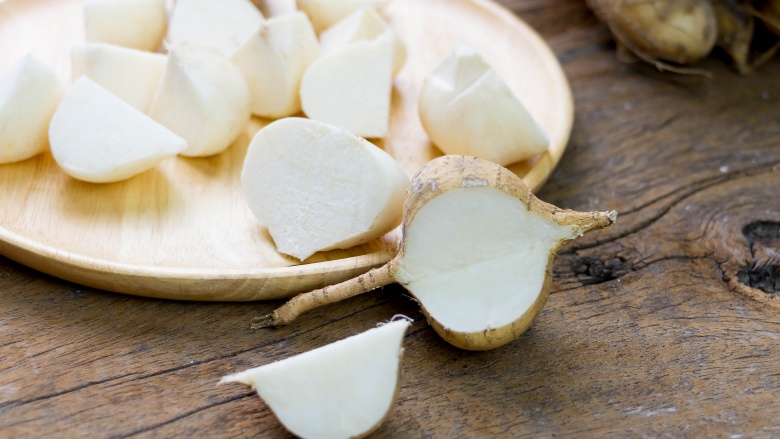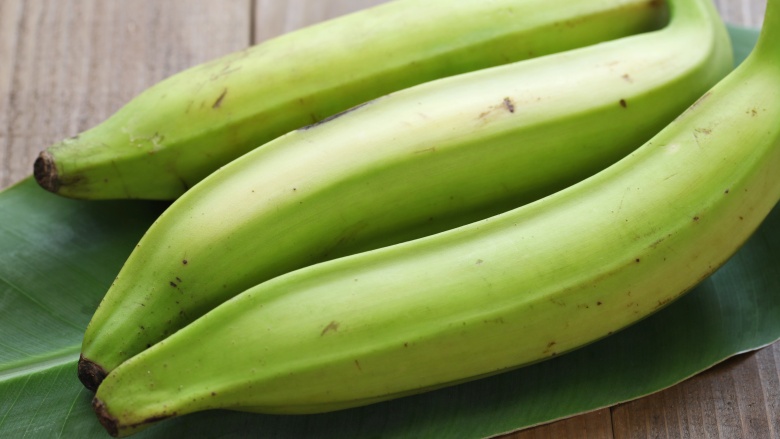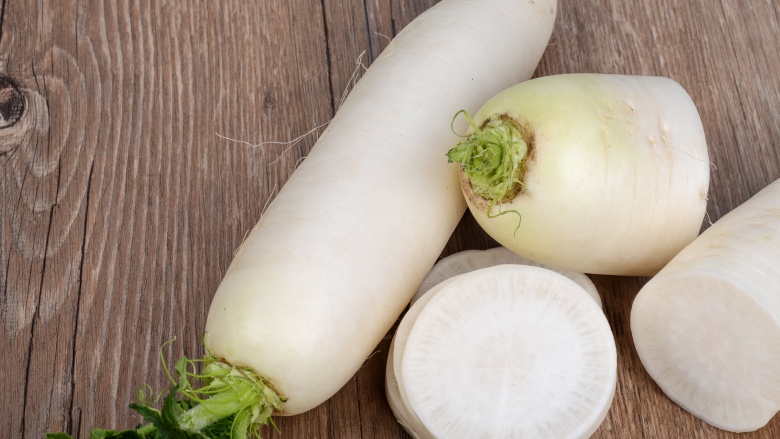7 Foods You Never Knew You Could Noodle
Noodles are traditionally made from dough and cut into different shapes, depending on the dish. But there are so many other ways to prepare this staple without using unleavened dough. The spiralizer has opened up new possibilities for everyone watching their carbohydrate intake, or for anyone who's simply bored with the classic noodle-and-sauce deal. Other than the zucchini, which is the most commonly noodled vegetable, what else can be transformed using a spiralizer? Here are some foods you probably never thought to noodle.
Apples
Apples are one of the easiest fruits to noodle — you can use your spiralizer without removing the skin or core. After all, the skin of an apple is the healthiest part, being packed with fiber and nutrients. Once you have a pile of apple "pasta," you'll need to start cooking. Why not update your favorite apple crumble recipe with this new technique? Spiraling the apples for the recipe is sure to cut down on prep time, without all the coring and slicing.
Carrots
Carrots are an ideal vegetable to spiralize, because once cooked, the texture of carrots is similar to that of al dente pasta. You'll need to peel the carrots before you start using the spiralizer, but after that, the cooking process could not be easier. Treat these noodles just like pasta — boil them in salted water, then drain, and toss with browned butter and rosemary. This is a carbohydrate-free dish that can be used as a vegetarian main course.
Jicama
Jicama is a root vegetable that takes the place of potatoes in many recipes. You'll see jicama fries or mashed jicama in health-conscious establishments, because of its many health benefits. This vegetable is high in fiber, aids in digestion, and is even known to support your immune system. Noodling jicama is much like noodling a potato, in regards to texture. You can fry the strings of jicama in hot oil and sprinkle with sea salt for a crispy side, or maybe stick with the healthy recipes. Tossing this vegetable together with shredded carrots and dressing makes a delectable Asian slaw.
Onions
You may not think to noodle an onion, but this hack will save you an enormous amount of time in the future. Onions are usually diced small for most recipes, because who wants to bite into a giant cube of onion in the middle of a meatball? But then, there are those dishes that contradict our need to cover up the stinky vegetable, like onion rings or French onion soup. Using the spiralizer is the best way to get the perfect onion rings for dinner. Since you're not cutting these by hand, the rings will all have the same thickness and will cook evenly.
Green plantains
Plantains usually don't pack much flavor — they require some seasoning to combat the starchy taste. While these have an excellent texture that makes them ideal for noodling, you may want to try something other than just making pasta. Try taking the long noodles and mixing them with an egg, garlic powder, and chives. The egg will bind everything together and get the plantains ready for the next step. Form patties with the mixture and cook in a waffle iron until golden brown. Top with sour cream for an interesting side dish.
Daikon radishes
This exceptional radish is found primarily in Southeast and East Asia. It is a white, winter vegetable and is commonly pickled when being prepared. If you find yourself in an Asian market, you should pick up a few of these delicious radishes. Spiralizing the root provides an excellent base for a raw Korean salad. Toss together the noodled radish, Korean red pepper, sugar, salt, garlic, white vinegar, and green onions. You can refrigerate this dish until you're ready to eat, though we would suggest not letting it sit too long. If the daikon radish is left sitting in white vinegar for an extended period of time, you'll end up with pickled vegetables.
Beets
Beets are one of those vegetables you don't want to eat raw. If you have never had the displeasure of biting into a raw beet, we highly suggest avoiding it. The beet's earthy, mineral taste can be off-putting, though this bright and vibrant food is quite delicious once cooked. Noodling the beet is easy because of its shape and density — it will not fall apart in your spiralizer. Once you have a pile of bright red beet noodles, fry them in vegetable oil. When the beets are cooked all the way through, toss them with some sea salt. Serve this with a side of goat cheese dip for an outstanding upgrade from potato chips.







